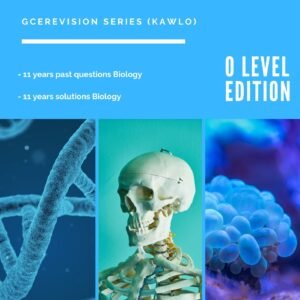National Exam of Higher National Diploma 2020 Economic Sciences
National Exam of Higher National Diploma 2020 Economic Sciences
Okay, I’ve extracted the data from the document “HND ECONOMICS_SCIENCE_2020.pdf”. Here’s the information organized for clarity:
Exam Details
- Exam Name: National Exam of Higher National Diploma-New program-2020 Session
- Specialty/option: PLO, ASM, PMA, HUR, ACC, MTS, BFI, INS, LAS, NGO, QMA
- Paper: Economic Science
- Duration: 3 hours
- Credit: 6
Instructions
- The paper has two sections.
- Answer all questions.
- Only non-programmable calculators are allowed.
Section A: Multiple Choice Questions (20 Marks)
-
What does the existence of scarcity imply?
- a. All goods are economic goods.
- b. Economic agents have to make choices
- c. It is not possible to increase the quantity of economic resources.
- d. Productive potential is reducing
-
The price system is most important under:
- A) Capitalism
- B)
- C) Fascism
- D) Communism
-
The cost that a firm incurs in purchasing or hiring any factor of production is referred to as:
- a. Explicit cost
- b.
- c.
-
The most technical efficient output of a firm is located:
- At the shutdown point
- b. At the break-even point
- c. Where
- d. Where the vertical distance between AVC and ATC is at a maximum
-
The very short period is the market condition where the supply remain perfectly
- a. Elastic
- b. Inelastic
- c. Unity elastic
- d. Elasticity less than 1.
-
The consumption function is often expressed as follows: ” b” in the function represents
- a. Autonomous consumption
- b. Induced consumption
- c. Private consumption
- d. Marginal propensity to consume
-
The lowering of the exchange rate of a currency by the Central Bank is known as
- a. Inflation
- b. Revaluation
- c. Devaluation
- d. Depreciation
-
Which of the following is used to measure inflation?
- a. Price system
- b. Price legislation
- c. Price index
- d. Price discrimination
-
The following factors exert influence on the of a country’s national income EXCEPT
- a. Quantity and quality of labour
- b. Availability of national resources
- c. Mobility of labour
- d. Technical know-how
-
The difference between the Gross National Product (GNP) and the Gross Domestic Product (GDP) is
- a. Consumption of fixed capital
- b. Net factor income from abroad
- c. Disposable income
- d. capita income
-
Which of the following statements correctly describes precautionary demand for money?
- a. To meet unforeseen expenses
- b. For day to day expenses
- c. For expected better investment opportunity
- d. To meet irregular expenses
-
Given the supply of a commodity in the market period, the price of the commodity is determined by;
- a. The market demand alone
- b. The market supply alone
- c. The market demand and supply curves
- d. None of the above
-
Under perfect competition, there are
- a. Many firms producing an identical product.
- b. A few producing an identical product.
- c. Many firms producing a differentiated product
- d. A few firms producing a differentiated product.
-
An economic good is one which is?
- a. Sold at a profit.
- b. has an opportunity cost
- c. Is supplied by the private sector
- d. Is produced under conditions of increasing efficiency.
-
The essential characteristic of a market economy is:
- a. Consumer sovereignty
- b. Consumer surplus
- c. Public corporations
- d. Producer surplus
-
The effect of civil war can results to
- a. An outward shift in the production possibility curve
- b. No change in the production possibility curve
- c. An inward shift in the production possibility curve
- d. A decrease in economic growth but no change in the production possibility curve
-
One of the characteristic of a public good is that
- a. It is excludable and rival in competition
- b. It gives more benefit to the community than individuals consuming it
- c. It gives more benefit to the individual consuming it than to the community as a whole
- d. None of the above.
-
The flow of output in the circular flow of income is known as
- a. Monetary flow b. product flow c. real flow d. factor flow
-
In a b. c. d. none of the above
-
The goods can be considered inferior goods in economics, if an increase in disposable income of the consumer causes
- a. An increase in demand
- b. No change in demand
- c. Decrease in demand
- d. Less than proportionate change in demand
Section B: Problem Solving Essay Writing (80 Marks)
-
Question 1: (20 marks)
- a) Distinguish between direct and indirect production activities (10marks)
- b) How has the concept of specialization benefited most countries? (4marks)
- c) Why is the average total cost curve U-Shaped? (6marks)
-
Question 2: (20 marks)
- The following information concerns the demand and supply of mangoes The following table:
| Price | Quantity demanded (kg) | Quantity supplied (kg) |
| —– | ———————– | ———————– |
| 400 | 1700 | |
| 700 | 800 | |
| 800 | 500 | 1700 |
| 500 | 1400 | 200 |
| 600 | 1100 | 700 |
- a) On the graph paper provided, determine the equilibrium price and quantity (5marks)
- b) If Cameroon government guarantees a a price of 700 frames per Kg of mangoes, what will be the likely consequences on this policy? (5marks)
- c) Suppose that, demand increases by 50%, using the same graph, what will be the new equilibrium price and quantity? (2.5marks)
- d) Calculate the price elasticity of demand at the equilibrium demand and interprete your answer. (5marks)
- e) List five determinants of elasticity of demand (2.5marks)
-
Question 3:
- A firm producing yoghurt at a unit price of 300 FCFA.
- Has fixed cost of 1000 frs.
- Its variable costs are as follows;
| KAWLO | | Total variable cost (TVC) |
| —– | – | ———————– |
| 1 | | 3000 |
| 2 | | 4000 |
| 3 | | 6000 |
| 4 | | 9000 |
| 5 | | 14000 |
| 6 | | 21000 |
| 7 | | 30000 |
| 8 | | 41000 |
| 9 | | 54000 |
- i. Insert and complete the columns for TR, TC, MC, AC and MR (where TC is total cost. TR is total revenue, MC is marginal cost, AC is the average cost and MR the marginal revenue) (5marks)
- ii. What is the profit maximizing output (1mark)
- iii. Calculate the maximum profit per unit. (Imark)
- iv. Calculate the total profits (2marks)
- v. Assume that rents increase by 25%. Show how this increase affects the total cost and consequently how the profit maximizing output will be affected
- vi. How will the total maximized profits be affected by new circumstances in above (2marks).
-
Question 4: (20 marks)
- Assume the following information represents the national income model for a hypothetical economy (values in millions of CFA francs);
- Where M and X are imports and exports respect C is consumption; I is investment; G is government spending; T is taxation and is disposable income.
- Calculate the following:
- 1. The equilibrium level of national income (4 marks)
- 2. The Equilibrium level of consumption (3 marks)
- 3. The equilibrium level of imports. (3 marks)
- 4. The equilibrium level of taxes (3 marks)
- 5. Determine the value of the multiplier and interpret your result. (4 marks)
- 6. Briefly explain any three limitations of the multiplier.(6 marks)
I have included all the questions, data, and formulas from the exam paper.














